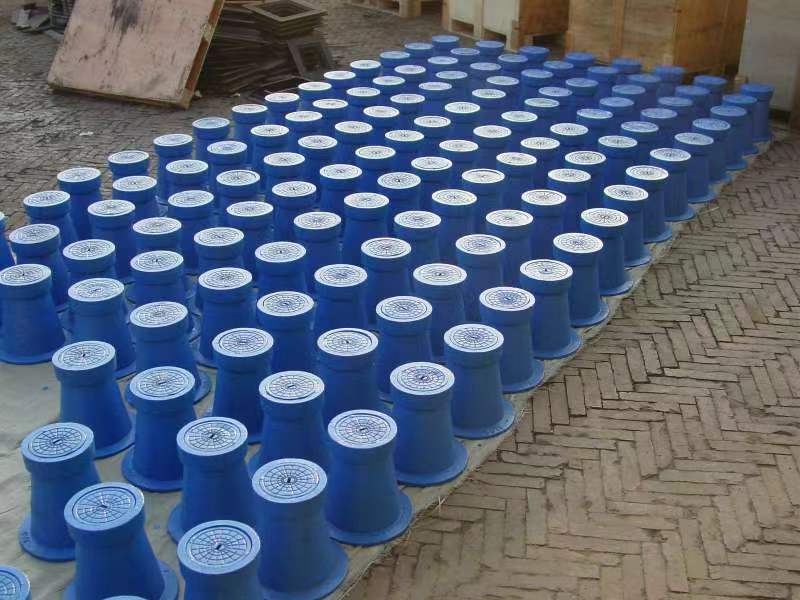Disassembling Joint Pipes for Efficient Repair and Maintenance Techniques
Understanding Dismantling Joint Pipes An Essential Component in Piping Systems
In the realm of industrial piping systems, the dismantling joint pipe stands out as a critical component for maintenance and operational flexibility. It serves a unique purpose that facilitates the easy disassembly of piping sections without the need for complex tools or extensive labor. This article delves into the functionality, benefits, installation, and considerations surrounding dismantling joint pipes.
What are Dismantling Joint Pipes?
Dismantling joint pipes are mechanical devices designed to allow for easy separation of connected pipeline sections. These pipes are usually installed between two fixed ends of a piping system to provide access for maintenance, repair, or replacement of pipes and equipment without significant disruption. They are typically made from robust materials such as ductile iron, stainless steel, or carbon steel, and come in various sizes to suit a wide range of applications.
Key Features and Benefits
1. Ease of Maintenance One of the primary benefits of dismantling joint pipes is the ease with which maintenance tasks can be performed. Regular service on pipelines, valves, and other equipment can be carried out without complete disassembly of the entire system, saving both time and labor costs.
2. Flexibility Dismantling joints provide flexibility in the piping layout, allowing for adjustments or modifications in infrastructure without compromising the integrity of the system. This adaptability is particularly invaluable in industries that require frequent changes due to evolving operational needs.
3. Reduced Downtime In industries like water treatment, oil and gas, and manufacturing, prolonged downtimes can lead to significant financial losses. The quick and efficient access afforded by dismantling joint pipes helps to minimize downtime during necessary repairs.
4. Sealing Capability High-quality dismantling joints come equipped with advanced sealing mechanisms that prevent leaks while allowing for the dismantling process. This ensures that the pipe system remains operational and leak-free until the point of maintenance is required.
Installation Processes
The installation of dismantling joint pipes, while straightforward, requires attention to detail to ensure optimal functionality. Typically, the process involves the following steps
dismantling joint pipe

1. Choosing the Right Location Identify the suitable section of the piping system for the installation of the dismantling joint. It should be positioned between two fixed points, such as valves or flanges.
2. Aligning the Pipe Ends Ensure the pipe ends are aligned correctly, as misalignment can lead to stress and eventual failure. Proper alignment is crucial for the effectiveness of the dismantling joint.
3. Setting the Joint Once aligned, the dismantling joint can be placed between the two pipe ends. It is essential to follow the manufacturer's guidelines regarding spacing and settings to ensure the joint functions effectively.
4. Securing the Installation After positioning the dismantling joint, it is necessary to secure it using bolts or other fastening methods as specified by the manufacturer. This step is vital to maintaining the integrity of the entire piping system.
5. Testing for Leaks After installation, a pressure test should be conducted to ensure that the joint is sealed correctly and that there are no leaks. This final verification step confirms the readiness of the system for operation.
Considerations
While dismantling joint pipes offer numerous advantages, several considerations must be kept in mind
- Material Selection The choice of material for dismantling joints should be based on the specific application, including the media being transported and the environmental conditions both inside and outside the pipeline.
- Compatibility Ensure compatibility with existing piping systems. This includes matching diameters, pressure ratings, and connection types to guarantee seamless integration.
- Regular Inspections Like any other component in a piping system, dismantling joint pipes require regular inspections to check for wear and tear. Routine maintenance ensures that they function correctly and prolongs their lifespan.
In conclusion, dismantling joint pipes are integral to the efficiency and functionality of various piping systems across multiple industries. Their ability to simplify maintenance, provide flexibility, and reduce downtime makes them an invaluable asset in ensuring the smooth operation of pipelines. As industries continue to evolve, the importance of such components will only continue to grow, making it essential for operators to understand their advantages and best practices in installation and maintenance.
-
Square Sewer Cover Enhances Urban SafetyNewsAug.01,2025
-
Pipe Fitting Requires Precise AlignmentNewsAug.01,2025
-
Manhole Step Is DurableNewsAug.01,2025
-
Manhole Cover Is Found WorldwideNewsAug.01,2025
-
Hole Cover Frame On RoadsNewsAug.01,2025
-
Gully Grate Improves Road SafetyNewsAug.01,2025
-
Man Hole Cover Round Load CapacityNewsJul.31,2025
